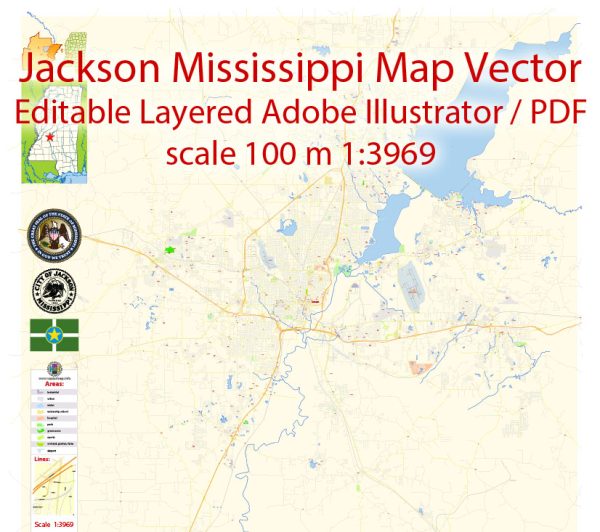Jackson, Mississippi, has a rich history of urban development that reflects the broader trends and challenges faced by many American cities. The city, named after President Andrew Jackson, was founded in 1821 and has played a significant role in the history of the American South. Here’s an overview of Jackson’s urban development:
- Early Years and Antebellum Period (1820s-1860s):
- Jackson was established as the capital of Mississippi in 1821, and its strategic location on the Pearl River contributed to its early growth.
- During the antebellum period, the city developed as a center for agriculture, commerce, and transportation. Cotton became a major economic driver, and Jackson became a hub for the cotton trade.
- Civil War and Reconstruction (1860s-1870s):
- Like many Southern cities, Jackson faced significant challenges during the Civil War. The city changed hands multiple times between Confederate and Union forces.
- After the war, during the Reconstruction era, Jackson experienced economic hardships and social upheaval. The city’s African American population played a crucial role in shaping its post-war development.
- Late 19th to Early 20th Century:
- The late 19th century saw the expansion of the railroads, further enhancing Jackson’s role as a transportation center.
- The city’s architecture during this period reflects a mix of Victorian and early 20th-century styles. The construction of the State Capitol Building in 1903 is a notable example.
- Great Depression and World War II (1930s-1940s):
- Jackson, like many cities, faced economic challenges during the Great Depression. The New Deal programs brought some relief and contributed to infrastructure projects.
- During World War II, the city’s economy benefited from the demand for war-related industries and the presence of Camp Shelby, a major military training center.
- Civil Rights Era (1950s-1960s):
- Jackson was a significant battleground during the Civil Rights Movement. The city was a focal point for protests, including the famous “Freedom Rides” in 1961.
- The struggle for civil rights left a lasting impact on the city’s social and political landscape.
- Post-Civil Rights to Present:
- Like many American cities, Jackson faced urban challenges in the latter half of the 20th century, including suburbanization and economic shifts.
- The city has worked to revitalize its downtown area, with efforts to preserve historic buildings and attract new businesses.
- Challenges and Opportunities:
- Jackson, like many urban areas, grapples with issues such as poverty, crime, and infrastructure challenges.
- Efforts have been made to address these issues through community development initiatives, infrastructure improvements, and economic revitalization projects.
Understanding Jackson’s history of urban development involves recognizing the city’s role in regional and national contexts, its economic shifts over time, and the social and political changes that have shaped its identity.


 Author: Kirill Shrayber, Ph.D.
Author: Kirill Shrayber, Ph.D.